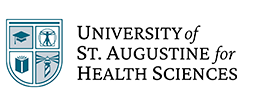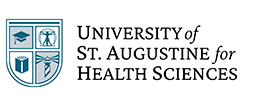
Nurse practitioners (NPs) and physician assistants (PAs) are advanced healthcare practitioners with similar responsibilities, such as diagnosing illnesses and prescribing medications. However, training and paths toward certification between a PA vs NP differ significantly.
Let’s unpack the differences between NP vs PA salary, career outlook and responsibilities to help you determine your best career path. Understanding the nurse practitioner vs physician assistant comparison can be crucial for your future.
PA vs NP: An Overview of Roles
The PA vs NP debate is common among aspiring healthcare professionals. While both roles are vital in healthcare, the NP vs PA comparison reveals differences in education, scope of practice and work environments. The difference between nurse practitioner and physician assistant roles lies primarily in their training and approach to patient care.
What Is a Nurse Practitioner?
An NP, meaning medical nurse practitioner, is a licensed clinician who provides comprehensive healthcare to patients of all ages. An NP can work in virtually any healthcare setting, diagnoses patient conditions and prescribes medications.1 As of October 2023, nurse practitioners have full practice authority in 28 states, meaning that they can practice independently without the supervision of a physician.2
Key responsibilities of a nurse practitioner include:1
- Diagnosing and treating acute and chronic conditions
- Prescribing medications, therapies and other treatments
- Managing general patient care
- Performing and interpreting diagnostic tests (e.g., x-rays and lab work)
- Educating patients about healthy lifestyle choices and disease prevention
- Counseling patients about their health care plan
- Holding specialty-specific responsibilities
What Is a Physician Assistant?
A PA, meaning medical physician assistant, is an advanced practice provider with a Master of Science in Physician Assistant Studies (MSPAS), licensed to provide many of the same clinical services as physicians when working in primary care settings. PAs perform physical exams, diagnose and treat illnesses and prescribe medications.3
The key responsibilities of a physician assistant include:4
- Taking medical histories
- Ordering and interpreting lab tests and diagnostic tests
- Performing physical exams
- Diagnosing and treating illness
- Assisting in surgeries
- Educating patients about their treatment plan
NP vs PA: Key Differences
What is the difference between a nurse practitioner and a physician assistant? The fundamental differences between a nurse practitioner vs physician assistant are the training they receive and their work environments.
Nurse practitioners are trained in advanced nursing and focus on a specialized role, such as neonatal nurse practitioner (NNP). Physician assistants have a general medicine foundation; their training follows the medical model and covers foundational aspects of medicine and specialties. When examining the career path of a physician assistant vs nurse practitioner, consider the role distinctions.


Educational Differences Between Nurse Practitioners and Physician Assistants
Nurse practitioners and physician assistants must earn a graduate degree, complete a clinical training practicum and acquire certifications. The difference between PA and NP lies in the type of training and certification requirements. Both paths require rigorous study and clinical experience, but the difference between nurse practitioner and physician assistant is in the specific focus.
To become a nurse practitioner, complete the following:5
- Earn a Bachelor of Science in Nursing (BSN): A full-time BSN program typically takes four years to complete. Then, apply directly to earn your Master of Science in Nursing (MSN) through a BSN to MSN program or apply to BSN to DNP programs, like the one at USAHS, to earn your DNP.
- Pass the NCLEX-RN: Passing the NCLEX-RN examination is required to practice as a registered nurse (RN) in your state. Once you pass the exam, you will receive your RN license. Then, apply to RN to MSN programs and enroll directly to earn your MSN.
- Earn a graduate degree: You will need a Master of Science in Nursing (MSN) or a Doctor of Nursing Practice (DNP) — both degrees offered at USAHS. Each degree program requires a nurse practitioner role specialty, such as Family Nurse Practitioner (FNP). In addition to coursework, NP programs typically include a clinical practicum of at least 500 hours under the supervision of a preceptor.6
- Become a Certified Nurse Practitioner (CNP): Take a national certification exam through one of the five national certification boards to become licensed as a nurse practitioner.7
- Become Licensed in Your State: Apply for licensure as an NP from your state board. For certification renewal, nurse practitioners must take 100 hours of advanced continuing education and 1,000 clinical hours every five years.8
To become a physician assistant, complete the following:9
- Earn your master’s degree: You must graduate from an accredited PA program—typically an MSPAS program. You must also complete at least 2,000 hours of supervised clinical rotation.4
- Pass the Physician Assistant National Certifying Examination (PANCE): Once you pass the PANCE exam, administered by the National Commission on Certification of Physician Assistants (NCCPA), you can receive your state license. Upon completion, you’ll earn the designation of PA-C, meaning Physician Assistant, Certified.
- Maintain national certification: You must complete 100 hours of continuing medical education (CME) every two years to maintain your status as a PA-C (medical abbreviation for Physician Assistant, Certified). PAs are required to take a recertification exam every 10 years.10
Work Environment Differences Between PA and NP
Another aspect of the PA vs NP comparison is their typical work settings and levels of autonomy. Nurse practitioners and physician assistants work in primary, acute and specialty care across healthcare settings, including medical offices, hospitals, nursing homes, Veterans Affairs (VA) facilities, correctional institutions and community clinics.1, 4
Although PAs can serve as primary care providers, they are typically required to work under the direct supervision of a physician or surgeon.4 The difference between PA and NP’s scope of practice varies from state to state and is determined through state licensing requirements.
Another difference between a nurse practitioner vs physician assistant is that NPs must work under the supervision of a physician in 11 states. However, in 28 states and two U.S. territories, nurse practitioners can practice with autonomy. The remaining 15 states and U.S. territories have regulations that fall somewhere in between.2
Specialization Differences Between Nurse Practitioner and Physician Assistant
Another difference between physician assistants and nurse practitioners is the legal distinctions. NPs can work across various nursing role specialties and earn certifications as required.
If an NP wants to switch specialty certifications, such as from neonatal to family nurse practitioner (FNP), they need formal education and licensure. Meanwhile, once licensed, a PA can switch specialties without a new certification or additional job training.11


NP vs PA: Career Outlook
When choosing between a career as a nurse practitioner vs physician assistant, your prospects are promising. Employment for nurse practitioners and physician assistants is projected to grow over the next decade faster than the average projected growth for all occupations.
The U.S. Bureau of Labor Statistics (BLS) predicts a 40 percent increase in NP roles and 28 percent growth for PA roles between 2023 and 2033.12,13 Also, U.S. News & World Report ranks these professions as the top two roles in 2024: nurse practitioner sits at #1 and physician assistant at #2 in the publication’s Best Health Care Jobs list.14
NP vs PA: Salary
As of 2023, the median salary of a nurse practitioner is $129,480, while the median salary of a physician assistant is $130,020.12,13
When considering NP vs PA salary, look at factors beyond median pay. The difference between nurse practitioner vs physician assistant salary is relatively small but can vary based on specialization and location.
How to Choose the Right Career Path Between Nurse Practitioner vs Physician Assistant


Comparing the educational requirements, work environments and scope of practice can help you choose between a career as a physician assistant vs nurse practitioner. For example, an NP (vs PA) will spend more time counseling patients and their families on health promotion and disease prevention. Physician assistants, on the other hand, may take up a surgical specialty.15
When deciding between a career as a nurse practitioner vs physician assistant, consider your long-term goals and preferred care approach. Your decision in the debate of a career as a PA vs NP ultimately comes down to your personal interests and professional aspirations.
Resources for Nurse Practitioners
The following organizations give nurse practitioners access to professional development opportunities, events and other benefits:
- American Association of Nurse Practitioners (AANP)
- National League for Nursing (NLN)
- American Nurses Association (ANA)
Resources for Physician Assistants
Should you pursue a career as a physician assistant, these organizations will give you a chance to participate in seminars, networking events and professional development opportunities:
- National Commission on Certification of Physician Assistants (NCCPA)
- The Physician Assistant (PA) Foundation
- American Academy of Physician Associates (AAPA)
- The Physician Assistant Education Association (PAEA)


The Final Word on the Difference Between Nurse Practitioner and Physician Assistant
Whether you decide to explore a career as a PA or NP, it’s encouraging to know that the demand for both is increasing within healthcare. Both are rewarding roles that can help patients live healthier and longer lives. Salary is not a major factor, considering the difference between nurse practitioner vs physician assistant salary is minimal.
No matter which field you choose, between physician assistant vs nurse practitioner, both professions play crucial roles in modern healthcare delivery. Each role offers unique strengths and opportunities for specialization.
The University of St. Augustine for Health Sciences (USAHS) offers Master of Science in Nursing (MSN), Doctor of Nursing Practice (DNP) and Post-Graduate Nursing Certificates designed for working nurses. Our degrees are offered online, with optional on-campus immersions.* Role specialties include Family Nurse Practitioner (FNP), Psychiatric Mental Health Nurse Practitioner (PMHNP), Nurse Educator** and Nurse Executive. The MSN has several options to accelerate your time to degree completion. Earn your advanced nursing degree while keeping your work and life in balance.
*The FNP role specialty includes one required hands-on clinical intensive and the PMHNP role specialty includes one required virtual clinical intensive as part of the curriculum.
**The Nurse Educator role specialty, available only for the MSN and Post-Graduate Nursing Certificate programs, is not currently enrolling students.
Sources
- American Association of Nurse Practitioners, “What’s a Nurse Practitioner (NP)?”, AANP, 2024, https://www.aanp.org/about/all-about-nps/whats-a-nurse-practitioner.
- American Association of Nurse Practitioners, “State Practice Environment,” AANP, October 2023, https://www.aanp.org/advocacy/state/state-practice-environment.
- Physician Assistant Education Association, “What is a PA?”, PAEA, 2024, https://paeaonline.org/how-we-can-help/advisors/what-is-a-pa.
- American Academy of PAs, “What is a PA?”, AAPA, 2024, https://www.aapa.org/about/what-is-a-pa/.
- Nursing License Map, “How to Become a Nurse Practitioner,” Nursing License Map, October 2021, https://nursinglicensemap.com/advanced-practice-nursing/nurse-practitioner/.
- American Association of Colleges of Nursing, “Clinical Hours”, Frequently Asked Questions, https://www.aacnnursing.org/essentials/tool-kit/faqs.
- American Academy of Nurse Practitioners, “Nurse Practitioner (NP) Certification,” AANP, 2024, https://www.aanp.org/student-resources-old/np-certification.
- American Academy of Nurse Practitioners, “Renewal Requirements,” AANP, 2024, https://www.aanpcert.org/recert/index.
- National Commission on Certification of Physician Assistants, “You’re beginning an exciting and rewarding career; and NCCPA certification is an important step as you begin this journey,” NCCPA, 2024, https://www.nccpa.net/become-certified.
- American Academy of PAs, “CME FAQs,” AAPA, 2024, https://www.aapa.org/cme-central/cme-faqs.
- Ryanne Coulson, “PA vs. NP: A Simple Explanation of the Fundamental Differences,” Be a Physician Assistant, May 2, 2017, https://beaphysicianassistant.com/blog/difference-between-pa-and-np.
- U.S. Bureau of Labor Statistics, “Nurse Anesthetists, Nurse Midwives, and Nurse Practitioners: Summary,” BLS, April 17, 2024, https://www.bls.gov/ooh/healthcare/nurse-anesthetists-nurse-midwives-and-nurse-practitioners.htm.
- U.S. Bureau of Labor Statistics, “Physician Assistants: Summary,” BLS, April 17, 2024, https://www.bls.gov/ooh/healthcare/physician-assistants.htm.
- U.S. News & World Report, “Best Health Care Jobs,” U.S. News & World Report, 2024, https://money.usnews.com/careers/best-jobs/rankings/best-healthcare-jobs.
- Nurse.org, “Nurse Practitioner (NP) vs Physician Assistant (PA): Which Role is Right for You?,” July 27, 2023: https://nurse.org/articles/rise-of-non-physician-roles-in-medicine/.








